Lucy Calkins Units of Study Reading Grade 4 Lesson Plans
Units of Written report for Educational activity Reading
A Workshop Curriculum for Kindergarten–Form five
High Expectations, Doable Goals
The reading units of study help teachers provide their students with instruction, opportunities for practice, and physical doable goals to help them come across and exceed whatsoever set of high standards.
Proven Tools and Methods
It is an understatement to say these units have been piloted many times. The teaching in these books has been planned, taught, revised, and retaught, through a bike of comeback involving literally thousands of classrooms in schools dotting the globe.
A Clear Instructional Arc
Each reading unit represents virtually five to six weeks of teaching, structured into 3 or 4 "bends in the road." Rather than tackling the entire journey all at once, it's easier to embark on this serial of shorter, focused bends, pausing between each to regroup and ready for the next.
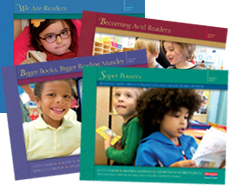
Units of Study
Grades G–2 include one foundational unit and three other units to address reading fiction and informational texts. Grades 3–5 each include two units in reading fiction and 2 in reading advisory texts.
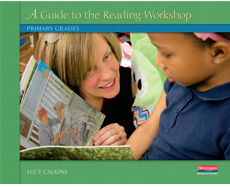
A Guide to the Reading Workshop
Describes the essential principles, methods, and structures of effective reading workshop instruction. (Bachelor for separate purchase—platonic for administrators and coaches who are supporting implementation of Units of Study.)
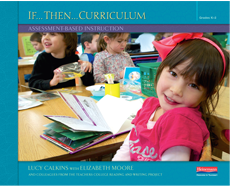
If...And then...Curriculum:
Assessment-Based Education
Abbreviated versions of boosted units help teachers come across specific instructional needs.
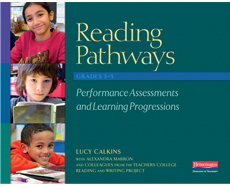
Reading Pathways:
Operation Assessments and Learning Progressions, Grades 3–five
Puts a organisation for assessing reading into teachers' hands and into the hands of students.
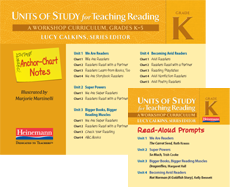
Anchor Chart Sticky Notes (K–v) & Read-Aloud Glutinous Notes (K–ii)
Large-format glutinous notes help teachers create and evolve anchor charts beyond the units and preprinted pasty notes for grades Chiliad–2 highlight possible teaching points during read-alouds.
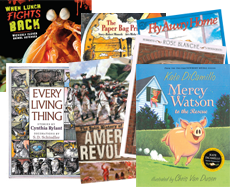
Trade Book Packs
(recommended optional purchase)
Used as demonstration texts for teachers to model the skills and strategies students will try. Some of these books are also used for read-aloud and shared reading.
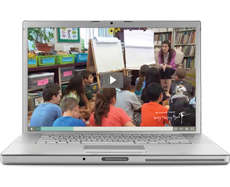
Online Resources
A treasure chest of resources, including bibliographies, curt texts, reproducible checklists, pre- and post-assessments, homework, mentor texts, videos, and Spider web links.
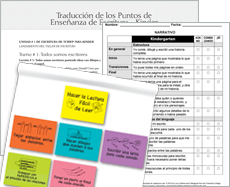
Online Resources - Spanish Translations
Castilian translations of resource such as educational activity points, anchor charts, and educatee self-assessment resources are provided, along with lists of Castilian-linguistic communication mentor texts.

Form-Level Video Orientations
In these video courses, Lucy Calkins and her colleagues provide an overview of the units along with tips and guidelines to help teachers get off to a practiced start.
Frequently Asked Questions (FAQs)
Overview
- Series Overview Pam Smith (19:03)
- Why exercise a reading workshop? Lucy Calkins (i:59)
- What is different in the new Units of Study for Pedagogy Reading? Lucy Calkins (1:eleven)
- How are the reading and writing units connected? Katie Clements, Kelly Boland Hohne (two:33)
- What is the basic construction of the Units of Report for Teaching Reading? Lucy Calkins (two:06)
- How is explicit education woven throughout the Units? Lucy Calkins (2:04)
- How are the Learning Progressions used to raise the level of students' reading in grades three-5? Lucy Calkins (1:48)
- What are some examples of reading units that direct align with writing units? (intermediate grades) Katie Clements, Kelly Boland Hohne (5:xv)
Getting Started
- Advice for unpacking your new units box. Lucy Calkins (ane:34)
- Practical advice for ramping upward in your first twelvemonth with the units. Lucy Calkins (3:39)
- Classroom Videos from TCRWP
Grade-Level Back up
- How do the units help kindergarteners get started learning to read? Natalie Louis (iii:00)
- How does instruction progress beyond the kindergarten units? Natalie Louis (2:44)
- How does pedagogy progress across the outset course units? Elizabeth Dunford Franco (two:53)
- How is reading adult beyond the second class units? Amanda Hartman (v:51)
Support for Specific Topics
- How do the primary reading units teach the reading process? Natalie Louis (1:32)
- How are students supported in applying discussion study learning in the units? Katie Wears, Lindsay Barton (3:35)
- How are tools used within the units to support teaching and appoint students? Elizabeth Dunford Franco, Marjorie Martinelli (5:50)
- How is shared reading addressed in the units? Lauren Kolbeck, Angela Baez (1:46)
- How is read-aloud supported within the units? Lauren Kolbeck, Angela Baez (2:11)
- How are nonfiction reading skills developed across the intermediate units? Katie Clements, Kathleen Tolan (17:16)
- How is character taught beyond the units? Katie Clements, Kathleen Tolan (12:28)
- What should teachers recollect about as they set classroom libraries? Lauren Kolbeck, Angela Baez (ii:09)
Leadership
- How tin can administrators help teachers succeed with the units? Lucy Calkins (3:05)
- How tin administrators back up communities of learning in their schools? Lucy Calkins (2:35)
Purchasing Options
Series Bundles
Purchase Recommendation: choose the bundle with the Trade Book Packs if your library does not already include the mentor texts referenced in the Units.
Each Grade Level with Trade Pack
Each Class Level without Merchandise Pack
Additional Units of Written report for Selected Grade Levels
The TCRWP is a learning organization that is continuously building on their earlier piece of work. These two additional book-length units fit tongue-and-groove with the original grades 1 and 3 units.
Guides to the Reading Workshop
A copy of the appropriate Guide is included in your Units box. These Guides are offered as an optional purchase for administrators and coaches.
Trade Packs
Source: https://www.unitsofstudy.com/k5reading/
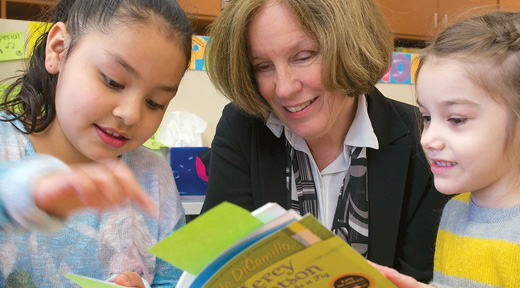
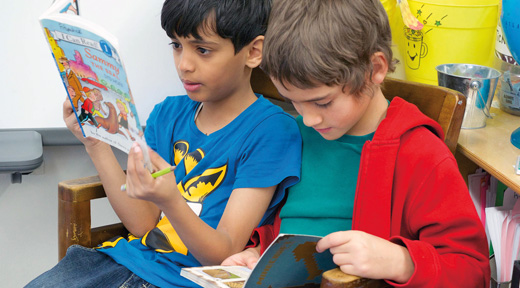
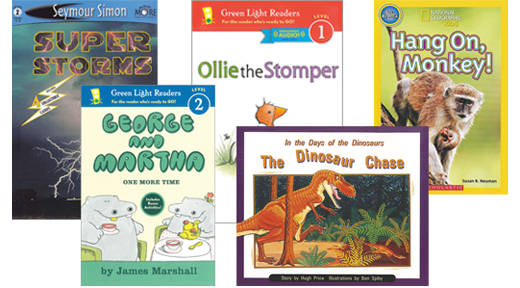
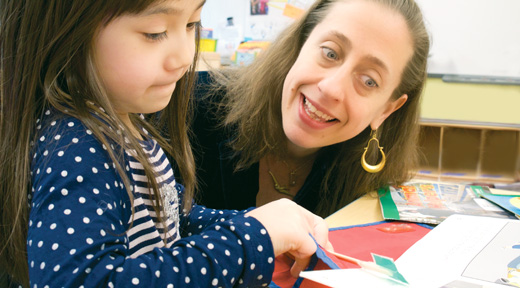
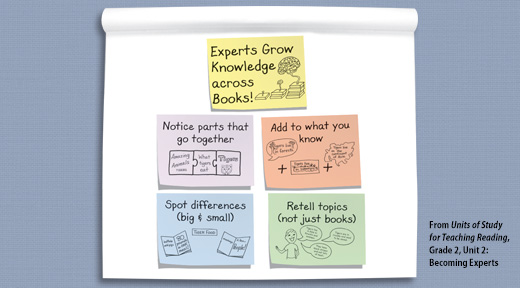

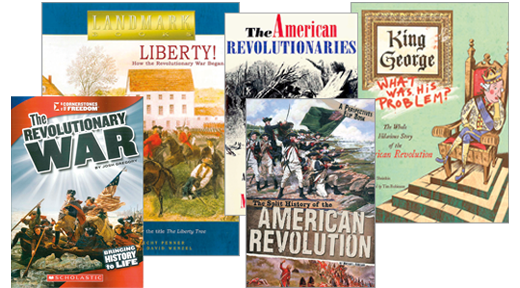
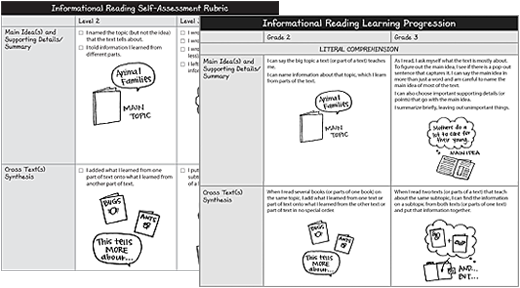
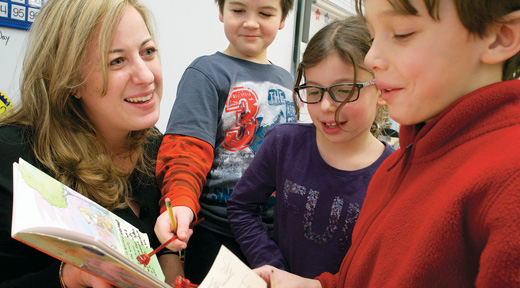

0 Response to "Lucy Calkins Units of Study Reading Grade 4 Lesson Plans"
Post a Comment